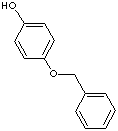|
Quinone is a group of aromatic compounds containing two opposite carbonyl groups (C=O) and the other two pairs of carbon atoms linked by vinylene group(-CH=CH) in a six-membered unsaturated ring. The carbonyl groups are located in different rings and form various chemical structures which offer important roles to colours. Quinones are used in photography and dye manufacture. Quinones occur benzoquinones, naphthoquinones, anthraquinones, and polycyclic quinones. Though quinones are found in plants and in a few animals, they usually are prepared by oxidation of aromatic amines, polyhydric phenols, and polynuclear hydrocarbons.The reduction of quinone to the corresponding dihydroxy form is an important characteristic reaction. In acidic solution, p-benzoquinone is reduced reversibly to hydroquinone. The so-called quinhydrone electrode, containing equimolar solution of quinone and hydroquinone, is used to determine hydrogen ion concentrations depends on the oxidation-reduction reactions. Hydroquinone and its derivatives used principally in photographic dye chemicals, in medicine, as an antioxidant, and in paints, varnishes, and motor fuels and oils. Hydroquinone and certain derivatives are also used as polymerization inhibitors by direct reacting with peroxy-free radical to tie up free radicals.
Monobenzone, applied topically to the skin, is used as a depigmenting agent inhibitting melanin produced by polymerization of oxidation products of tyrosine and dihydroxyphenyl compounds. Captamine is another compound of depigmentor.
|
|
There are three isomeric compounds of dihydroxybenzene molecule structure, which all have traditional names respectively. The ortho (1,2) isomer is called catechol (Also known as catechin pyrocatechol pyrocatechuic acid), which forms clear crystals used as a photographic developer in solution and as a starting material to produce synthetic catecholamines which have important physiological effects as neurotransmitters and hormonesany (such as epinephrine, adrenaline, norepinephrine, and dopamine). The meta (1,3) isomer is resorcinol (also known as resorcin), which forms clear needle crystals used in the production of diazo dyes and plasticizers. It is produced by sulfonating benzene with fuming sulfuric acid and fusing the resulting benzenedisulfonic acid with caustic soda. Resorcinol is used in resins as an UV absorber. It is used in manufacturing fluorescent and leather dyes and adhesives. Reaction with formaldehyde produces resins (resorcinol formaldehyde resins) used to make rayon and nylon. It is used as a pharmaceutical to treat acne and other greasy skin conditions in combination with other acne treatments such as sulfur. It is used as an anti-dandruff agent in shampoo and sunscreen cosmetics. It is also used as a chemical intermediate to synthesis pharmaceuticals and other organic compounds. The para (1,4) isomer is hydroquinone (also known as quinol), which forms clear prisms used as a photographic reducer and developer (except in color film). It is formed in large quantities by chemical reduction of benzoquinone. This compound is a general purpose inhibitor, stabilizer, antioxidant, and intermediate. One of the major uses of hydroquinone is as an intermediate to make other inhibitors, stabilizers, antioxidants, agricultural chemicals, and dyes. Resorcinol and its derivatives are used in resins as UV absorbers. They are used in manufacturing fluorescent and leather dyes and adhesives (resorcinol formaldehyde resins). They are used as pharmaceuticals to treat acne and other greasy skin conditions in combination with other acne treatments such as sulfur. They are used as an anti-dandruff agent in shampoo and sunscreen cosmetics. |
